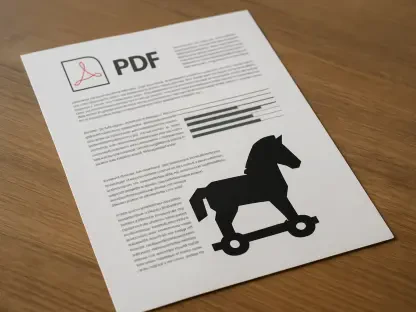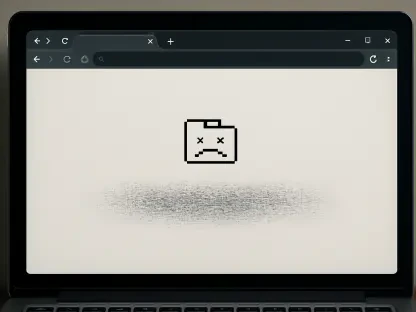Decentralized identity management (DIM) is an evolved method of identity and access management (IAM), benefiting both organizations and individuals. On the one hand, identity-related security breaches negatively impacted over 10 million people in 2022. And this is equally common among companies, with 45% suffering data breaches in 2022.
Fortunately, DIM enables users and businesses to optimize data security while benefiting from simple and convenient identity verification and management. This article will explore what DIM is, how this technology works, how it impacts organizations and users, and use cases for this solution.
What Is Decentralized Identity Management?
Decentralized identity management (DIM), or self-sovereign identity (SSI), is a form of identity and access management (IAM). This framework exists on the blockchain and allows the user to manage their personal information. In contrast, a centralized identity management system enables users to entrust a central organization or company to control their data.
In a DIM approach, the user stores their credentials in a digital wallet and can verify which aspects of their identities they wish to disclose to requesting parties. For instance, if a user rents a car, they can present their verifiable credentials (VCs), which are digital credentials stored in a digital wallet, to confirm their age, name, and surname without giving the vendor any other personal information.
Furthermore, organizations and users are increasingly becoming aware of DIM as a solution to IAM. According to research by MarketsandMarkets, the DIM industry was valued at $285 million in 2022, expecting to reach $6,822 million by 2027, boasting a compound annual growth rate (CAGR) of 88.7%. This report attributes the rapid growth of DIM to rising security and identity-related fraud, which will offer increased opportunities for this solution in the following years.
How Do Decentralized Systems Work?
DIM systems are powered by blockchain technology and rely on six components to work. Here are the various elements of DIM and their roles.
- Decentralized Wallet: These apps allow users to store and control their identifiable information.
- DID: This is a unique string of letters and numbers on the blockchain, which contains the information for the decentralized wallet’s private key and the user’s details.
- Verifiable Credentials (VCs): These are digital credentials that users provide to validate their identities.
- Holder: The user who creates their DID and digital wallet to store and manage their verifiable credentials.
- Issuer: The entity that signs and provides VCs to the holder.
- Verifier: The verifier is the organization or institution that receives the VCs from the holder and validates them against the issuing party.
Next, we will explore the impact of DIM on organizations and users when it comes to verifying their identity-related information.
How Does Decentralized Identity Management Impact Organizations?
DIM offers a wide range of benefits for organizations, such as quicker identity verification, certificate fraud prevention, and increased data security. In this section, we will take a closer look at each of these advantages.
- Quicker identity verification: Traditional verification can be time-consuming and inefficient for organizations. However, DIM allows these entities to validate identity-related information in seconds. For instance, when recruiting potential candidates, HR departments must validate educational and trade certifications, which can take days or weeks, depending on how responsive the issuing institution is. Yet, with DIM, businesses can do this within seconds, saving time and effort while eliminating possible bottlenecks in employee recruitment and onboarding.
- Prevent certificate fraud: Many job candidates use fake certifications to embellish their credentials. Around 200,000 fraudulent degrees are purchased by consumers on an annual basis, with over 370 websites and institutions offering these services. Fortunately, VC technology can help organizations prevent certificate fraud through DIM. These systems can validate the authenticity of documents and detect anomalies invisible to the naked eye.
- Increased data security: With DIM systems, businesses do not have to store extensive identity information, making them less susceptible to data breaches. Based on a report by IBM, the average identity data breach costs a company $9.44 million. This caliber of security breach also takes the most time to identify, at 327 days. However, with DIM, organizations can minimize the risk of these cyberattacks as users will manage their respective data.
How Does Decentralized Identity Management Impact Users?
In addition to organizations, DIM provides several advantages for end-users, allowing them to control their information and prevent data tracking. In addition, DIM enables simple and convenient storage and management of user details. Here are the benefits of DIM for individuals.
- Control of personal data: One of the most significant advantages of DIM for individuals is that these users have complete control over their personal information and who they choose to share it with. In contrast, centralized identity management systems enable organizations to store and manage the user’s data, meaning they control all this information. According to research by Verizon, most data breaches, across various industries, involve personal details and credentials, but with DIM, individuals can rely on improved security.
- Prevent data tracking: When users provide businesses and platforms with their personal information, they often consent to data tracking. While this benefits organizations as they can gather more insights into their target audience, the same does not apply to users. There are many dangers of being tracked online, namely information mishandling—if a website does not have a rigid data security infrastructure, this can expose sensitive information to cyber criminals. Fortunately, with DIM, individuals can prevent this.
- Simple and convenient data storage and management: Managing a digital wallet can be learned by most consumers, and, many digital wallet providers offer resources and guides to help users manage their credentials. Another advantage of these solutions is that users can conveniently store and control their personal information on their devices. In other words, they can digitally keep all their essential details instead of physical documents.
Key Use Cases
There are several use cases for DIM systems, which include eGovernment, banking, and healthcare. Here is a detailed overview of how these sectors leverage this technology for increased efficiency, security, and user experience.
eGovernment
As confirmed by a Cheqd report, many government entities are preparing to implement DIM technology for electronic identity verification. This technology offers government agencies efficiency as they can issue VCs for visas, passports, National IDs, permits, and similar documentation. In turn, VC holders can use their personal information for eVoting, signing up for public health benefits, registering companies, and similar tasks that would take much longer to complete through a manual verification process.
Banking
The KYC verification process is often a pain point for banking institutions—verifying each customer’s information is time-consuming and results in significant paperwork. Fortunately, banks can streamline this process and eliminate potential bottlenecks through VCs to validate their clients. For example, when customers apply for bank accounts, the bank has to wait on third parties to verify their clients, while with VCs, this process is instant.
Healthcare
Medical information and records of patients can be spread among multiple sources, making it challenging for hospitals to gather the required information effortlessly. DIM makes remote healthcare possible, and patients can provide all the details they need from their digital wallets. For instance, when emergencies occur outside a user’s country, they can give the hospital full access to their medical records, vaccination certifications, insurance cards, etc. Not only is this highly convenient for the user, but it will help healthcare facilities save time and excessive effort.
In Closing
With technology expanding, organizations and users continuously need reliable cybersecurity solutions to secure their data. Fortunately, Decentralized identity management (DIM) is one such solution, allowing businesses quicker identity authentication, certification fraud prevention, and increased data security.
Similarly, individuals will have better control over their data, prevent data tracking, and they can benefit from simple and convenient data storage and management. Moreover, several sectors are leveraging the advantages of this technology, including eGovernment, healthcare, and banking. Ultimately, based on the rise of data security breaches and the popularity of DIM, this industry will only expand in the following years.









